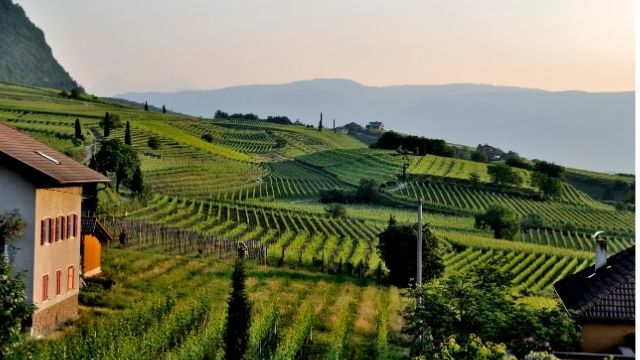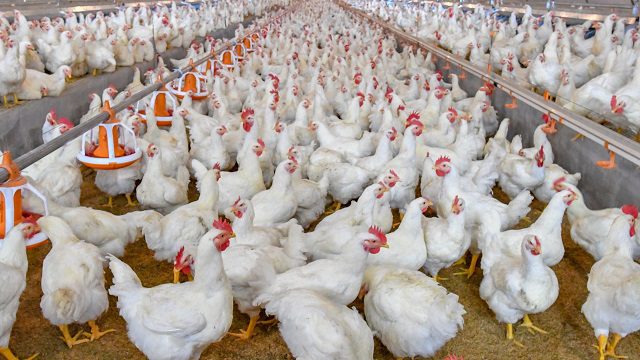The desire to succeed is an inherent human value for good health or wealth goals. Farming as a hobby and home gardening to grow safe food can help you in abundant living. Besides, profitable farming can give you more income. In this article, we give you 20 tips for successful farming in 2021
What does it mean to be successful in farming? for the sake of this article, we assume 3 points
- High quality produces in terms of safety, sizes, taste etc. that is fit as food in target markets.
- High yields whose sales returns can cover all costs for huge profits or ample to supply your caloric needs without buying more from markets.
- Right timing for your harvest to coincide with high demand and prices.
- Farming methods that protect and improve soil and nature.
In this article, we give you 20 tips for successful farming in 2022. International agriculture and food markets have food safety guidelines like the Global GAPs, GHCP and HACCP. They serve as an assurance of food safety for consumption. If you follow them, you can produce consistent yields for your self-consumption or sale in the domestic or export markets.
These tips are;
Conduct a Market survey
Use data to decide on successful farming. Do not follow what every gardener is growing. In the harvest season, you will get low prices, profits and high food wastes.
A market survey will benefit you to find a niche market for your goods. Besides, you can identify selling prices and an efficient supply chain for their distribution.
A rapid market analysis will help you gather evidence on customer needs and preferences. You can decide which crop or animal types and amount to raise.
Use Cropping calendar for planning
Plan your crop harvesting to coincide with peak demand season to earn the highest profits. Staggered and continuous planting will give you consistent harvests throughout the year.
Ranchers and herders can use artificial insemination (AI) services. It will match your animals’ birth dates to the wet season when fodder is abundant.
Composting
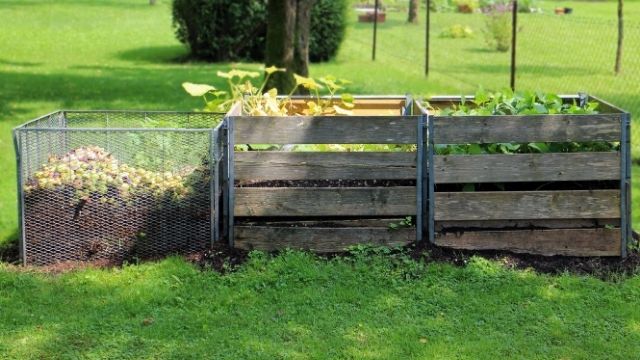
Compost or humus is the best organic material that you can add to your garden or lawn. It will improve your soil’s health and yields. Use carbon and nitrogen-rich materials like wood ash, table scraps and leaves.
The benefits of composting include its help to recycle kitchen and yard waste, reduce landfill wastes. Black gold supports thriving microorganisms in the ground. As it reduces the use of chemical fertilizers, it is good for the environment as it reduces your carbon footprint. You can do it in the backyard or indoors using composting bins or bags.
Soil testing
It’s advice for precision farmers. You will use the right fertilizer types and quantities that match your soil nutrient needs. A simple soil analysis can determine the soil’s qualities like elements and acidity. Use the results to buy the best blends. Apply the right amounts or doses for healthy plants.
Use certified seeds and quality seedlings
If you plant inferior quality Seeds, your yields will be low. The vice versa is also true. Certified planting materials are free of disease, pests and other defects. They also made to do well in your ecological region for optimal harvests.
Other benefits of using quality plants are getting high yields varieties, better attributes like resistance to disease or pests. This guide has tips for choosing the right seeds for your farm.
Seedlings preparation
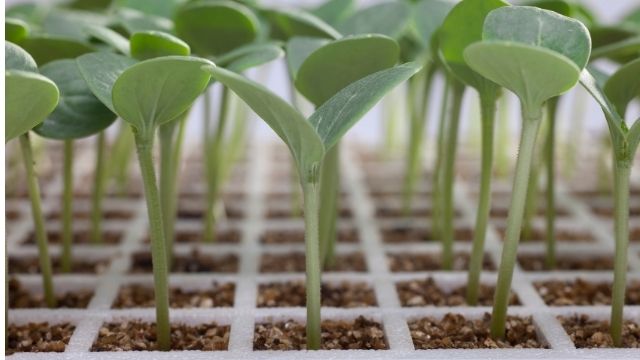
It applies if you raise seedlings from a separate seed or nursery bed and transplant to the main plot. If you can not do it, buy certified seedlings from a registered nursery or seed propagator. When you raise them yourself, avoid setting the nursery in a field that had the same crop. Avoid over-watering it, thin the excessive plants to grow health seedlings and use a mulch to provide shading and control weeds.
land preparation practices
Each plant has its recommended land preparation methods and practises for maximum production. Invest in the latest farming guides to get the steps to prepare a field for planting. The common ones for vegetable farming are
- Ploughing; till or dig up to mix and overturn the soils with manure.
- Harrowing; to break the large soil clods into smaller mass and mix the plant residues
- Raking to level the field
- Improve the soil; add compost to correct its PH
- Prepare holes; dig holes and fill them up with manure awaiting planting.
Incorporate crop residues

The materials left on the land after harvesting have many benefits for your farm. They cover the soil, protecting it from heavy rainfall drops and erosion by wind or water. The crop residues help to improve soil moisture retention. They recycle nutrients you removed when growing crops. Besides, they increase organic matter and support the living organisms in the soil.
Conservation farming, reduced and zero tillage are common ways farmers use plant residues such as stems, leaves, and roots. The other method is planting cover crops or green manure.
Use the correct plant spacing
Each crop type or vegetable has its recommended spacing. The suggested distance in inches or cm is between plant rows are specific to a region. You can find it on spacing charts or published on the seed packages or consult your areas’ extension officer.
Spacing determines the plant population per acre and hence their health. Proper plant spacing gives you a high yield. Plants can grow healthy from an ample supply of nutrients and water. It allows ease of cultivation and efficient use of your farming space.
Timely weeding
Weeds lower your plant yields by competing for water, nutrients and sunlight. They can also house destructive pests and diseases.
Timely weeding should be once you spot them appear on the soil surface. The top methods for managing weeds in your garden are cultivation, mulching and chemical means.
Mulching is the best method for vegetable farms and organic farmers. Besides, weed control, mulch can save moisture, regulate soil warmth and keep products clean of soil particles.
Basal application of compost
Apply the organic manures like compost, cow and chicken dung on your garden before sowing your seeds or planting seedlings. It ensures there is a uniform distribution of the fertilizers all over the field. Basal dressing before tilling allows it to mix with soil.
Top-dressing
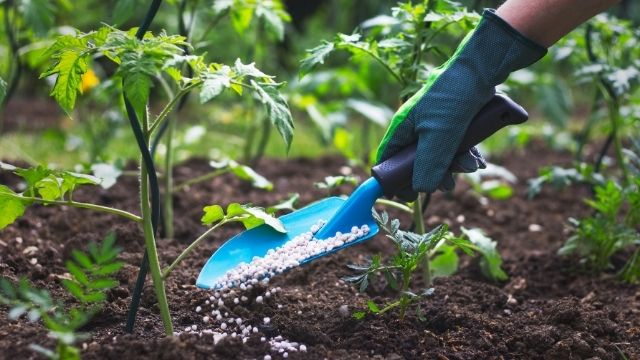
Topdressing is applying fertilizer on growing crops. The aim is to feed them with nitrogen nutrient in a readily available form. Have multiple applications instead of doing it once. Depending on your crops or scale, you can apply it manually or using spreaders and sprayers. You can also scatter it using harrows and or use soluble types and apply it using sprinklers.
The examples of nitrogen fertilizers used in top dressing are as follows. The last three are available in liquid form.
| Nitrogen fertilizer | Nitrogen component |
| Ammonium nitrate | 33.5–34.5% N |
| Ammonium nitrate lime | 21–26% N |
| Urea | 46% N |
| Sulphate of ammonia | 21% N |
| Sodium nitrate | 16% N |
| Calcium nitrate | 15.5% N |
| Anhydrous ammonia | 82% N |
| Aqueous ammonia | 12% N |
| Aqueous nitrogen solutions | 26–32% N |
Fertilizer application rate
Plants have different nutrient needs for high yield goals. Avoid feeding them extra or less by using the suggested application dose per acre. The rates differ in varying climatic regions. It may also vary if you are establishing or maintaining a plant.
You will need to test it to get its nutrient composition. Use the results of present Nitrogen (N), Potassium(K) and Phosphorous(P) and other trace elements to buy right blends and amounts. Apply the right amount per plant for healthy crops.
Irrigation
Watering plants in the dry spell can increase its yields. You can also use irrigation to apply nutrients and chemicals to crops.
For successful farming, use an efficient watering system like drip or trickle irrigation system. In smart gardening, you can augment it with sensors and the Internet of Things (IoT). It to deliver the right amount of water and nutrients in the right amounts at the right time. Since it pours directly on the plant’s root zone, you can save water, energy and fertilizers.
IPM practices
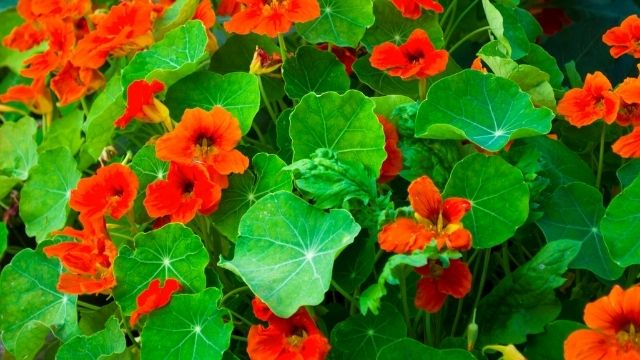
Toxic chemicals have long-lasting effects on people’s health and nature. Integrated pest management (IPM) seeks to undo this. It is an economical way that uses fewer sprays to control weeds and insects on your farm. IPM works by using four steps; to set an economic threshold beyond which pests can pose a threat, monitor, and identify insects, prevent populations spread into the farm and control them if prevention is no longer tenable.
IPM and Safe control methods include biological means like pheromones to disrupt pest mating. Mechanical control includes using insect traps like nets. Weeding helps to remove plants that can shelter pests.
Safe use of pesticides
Safe usage of pesticides limits its misuse and effects. It saves beneficial insects like natural predators and pollinators. The pests can not develop resistance or a re-surge. Besides, it reduces chemical residues to protect the wellbeing of people and nature.
Judicious use of pesticides include right mixing of chemicals, right application, storage and proper disposal of empty containers.
Maturity indices.
How do you tell a crop is right for harvesting? Harvesting index shows when it is the right stage to harvest fruit or a vegetable. It ensures it has the acceptable qualities for storage and sale. Each has its measures, the typical ones used in growing commercial fruits and vegetables like tomato, rice, mango, bananas, garlic or carrots are the skin colour, shape and size. Others are aroma, moisture content, acidity and firmness etc.
To reduce rates of food rejects, do not harvest immature or low-quality items.
Harvesting containers
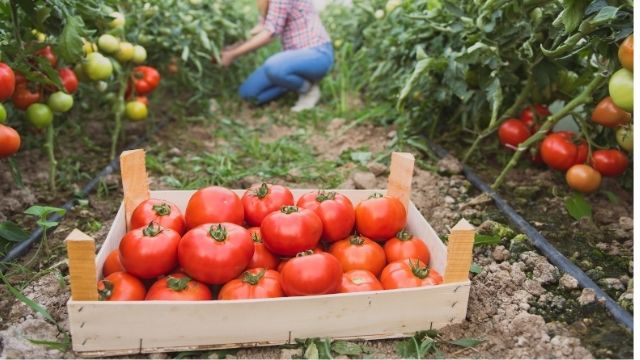
Several containers, tools and methods that you need to gather and transport farm produce. Dedicate specific plastic buckets and bags for harvesting fruits and vegetables only. Clean them regularly to lower food contamination. Other containers are polythene bags, bulk bins or field boxes or crates made of wood or plastics.
post-harvest handling and value addition
The other tip for successful farming is good post-harvest handling, packaging and storage. It will reduce spoilage, increase the shelf life of produce and add its value fetch higher prices.
The said operations are sorting, grading, cleaning, disinfection and waxing before packaging. Right storage must control the environment that maintains quality. Storage rooms can be cold for refrigeration or non-cold rooms like cellars and bans.
Farming records
Farm records keep track of costs and activities. You will refer them in future for-profit analysis, crop rotation and shopping decisions for farm inputs like seeds.
Records keeping is a requirement in modern farming for food quality and traceability systems.
Conclusion
The 20 tips above will make your farming more excitable and successful. They aim to give you consistent higher yields of high quality, reduce food waste and help you in timing for peak demand and price seasons.

